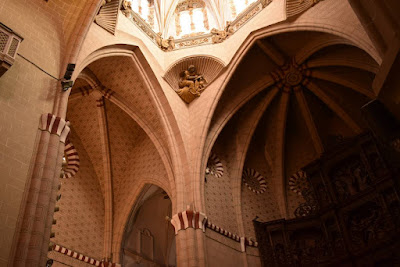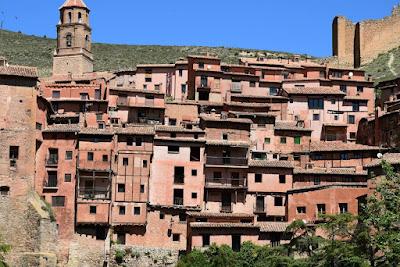It’s a pleasant town with a long history and many old
buildings, and was part of the English Crown for a time from 1152 when Eleanor
of Aquitaine married Henry II.
Almost always there’s a lovely church or cathedral, and here it is, built in the 16th century.
Beautiful stained glass inside set off by the harmonious
proportions of the pillars.
Outside we saw a statue of four swordsmen – the three
musketeer. It seems no. 4 comes as an extra freebee. The story is set vaguely in
this area, but apart from these statues we didn’t see any Three Musketeers
tearooms or Porthos’ Pubs etc.
The cathedral and statues form part of the central square,
all in this very light stone. Condom is also on the pilgrim route, so we saw a
few more cockleshell heroes. But wait – there’s a pilgrim’s donkey here as
well, tied up behind the church. On closer examination it turns out to be the very
same donkey we photographed in La Romieu, so the pilgrim (+ donkey) has plodded
on another 7 miles since the day before yesterday.
The town is on a hill as were many old communities for
defence reasons, so we walked down the hill to the car park by the river. There
were a number of vacant shops on the way but the painting of different scenes
on each frontage helped to take away the air of dereliction.
We finish with a pleasant river scene. River trade must have
been important in past times but the quay opposite is now used as a car park.
We didn’t notice anywhere a town coat of arms and wondered, as a parting shot,
what it might consist of. Maybe it’s the single “adults only” coat of arms in
France.



















































